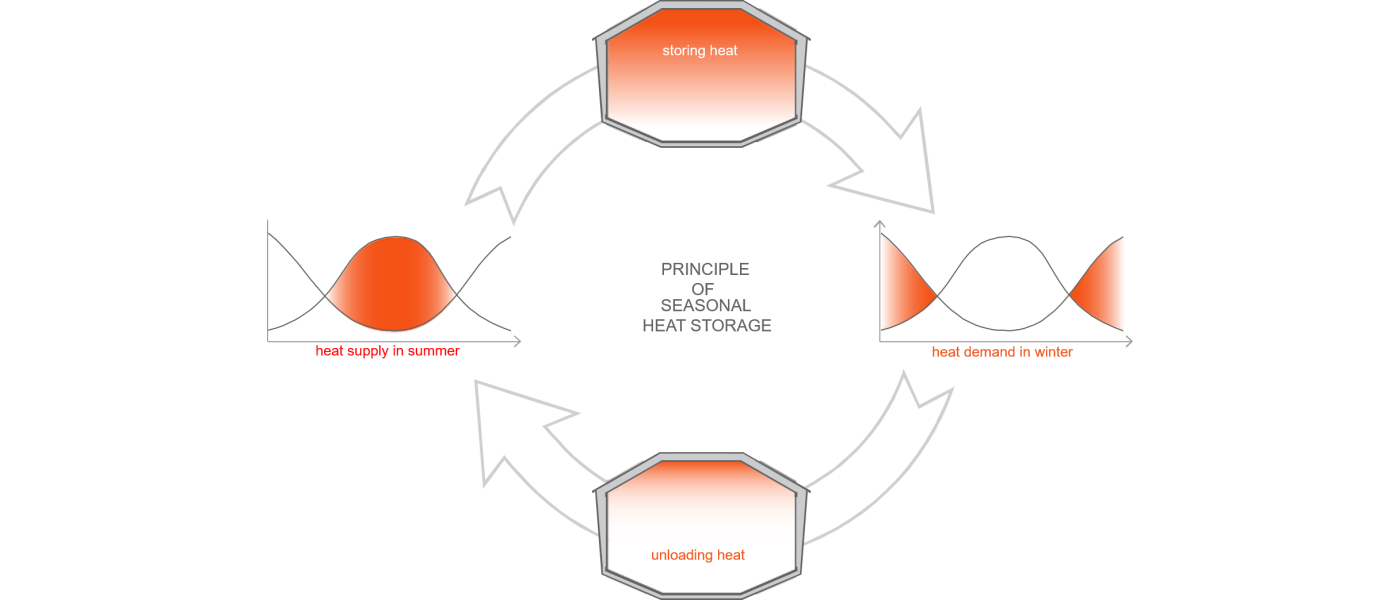Heat storage systems play a central role in the sustainable heat supply of the future, also in urban heating networks. In order to meet the diverse requirements, innovative plants are built in many places and new concepts are developed.
Germany’s biggest urban heat storage in Berlin
On the site of the Vattenfall-operated “Reuter West” CHP plant in Berlin, Germany’s largest urban heat storage facility is scheduled to go into operation from 2023. With a height of 45 metres and a diameter of 43 metres, it will hold 56 million litres of water for district heating purposes. The storage facility serves to optimise the heat generation from different heat sources and increases the system’s flexibility. One heat source will be a power-to-heat plant, which has already been put into operation on the site of Reuter West. In the future, a surplus of wind-generated power is stored as renewable heat and thus a shutdown of the wind turbines can be avoided.
giga_TES – Further development of seasonal heat storage systems
In the giga_TES project, 18 project partners under the coordination of AEE Intec have spent three years researching the further development of so-called pit thermal energy storages for metropolitan areas. These storage facilities are used as seasonal heat storages, storing for example solar heat generated in summer and making it available again in winter. The largest of this type is currently in operation in Vojens, Denmark, and holds a storage volume of 210,000 cubic meter , which covers about 25 % of the heat demand of the 8,000 inhabitants.
Within the project, heat storage facilities with storage volumes between 100,000 and 2 million cubic metres were considered. In addition to the volume, different temperature spreads were also investigated. Due to the size and costs of such storage facilities, concepts were developed and optimised based on numerical models. To evaluate the economic feasibility the levelised costc of the storage (LCOS) were calculated for different parameters.
One of the key factors in the further development of the giga_TES project was the construction depth of the pit thermal energy storage, which is 5 to 6 metres in the Danish models. For this purpose, the project partners have developed and patented a special wall construction, which can be built up to 50 metres deep and insulate the storage tank from the surrounding ground and groundwater. Patented solutions have also been developed for the storage’s cover. The cover has to withstand high and varying temperatures from the inside, weather and UV light from the outside and the changing water level due to temperature changes. In addition, urban areas require efficient land use, which imply multiple use of the surface area needed for the storage. With the concept named “Floating Cover 2.0”, the cover floats on the water surface and can be used as a park, greenhouse or solar collector field. With the “Submerged Cover” concept, the cover is beneath the water surface of the storage and an artificial lake is created. New, more durable materials made of special polypropylene for sealing were also developed. Other results of the project are various hybrid heat storages with the combination of pit thermal energy storages and steel tanks.
Geothermal heat storage for storing waste heat
Another research project is being realised by the Swiss Federal Laboratories for Materials Testing and Research (Empa) at the “co-operate” research campus in Dübendorf near Zurich. A seasonal geothermal heat storage system with 144 geothermal probes will be constructed and tested over 10 years. A special control system that can address each geothermal probe will be used to optimise temperatures, efficiency and storage capacity. Up to 90 % of the stored heat will come from waste heat of ventilation systems and laboratories.
Text and picture: Solites
Sources:
www.energie-und-management.de/Wärmepeicher_Berlin
www.solarserver.de/giga_TES
www.solarserver.de/erdsondenspeicher_empa

